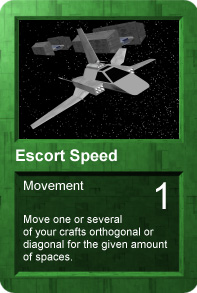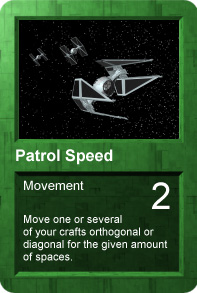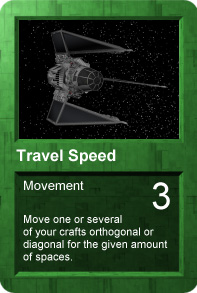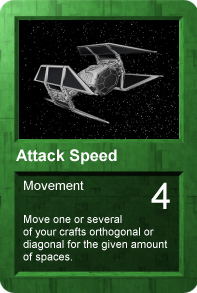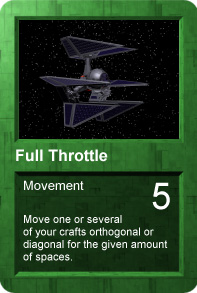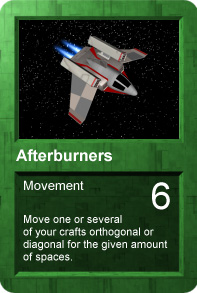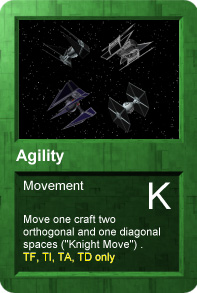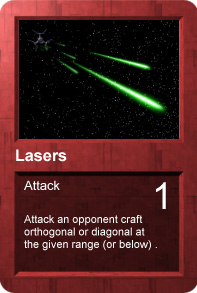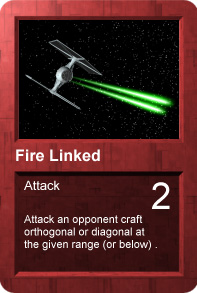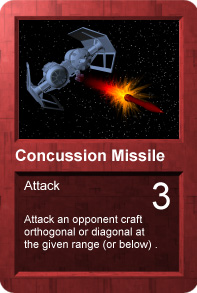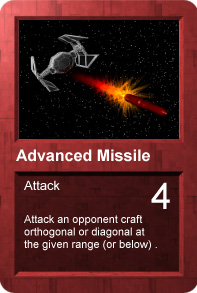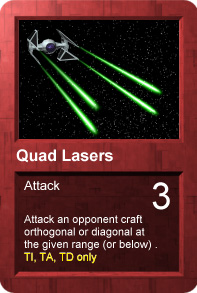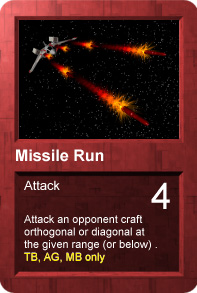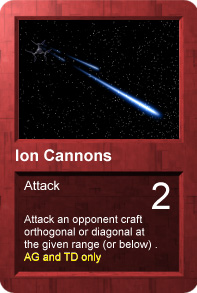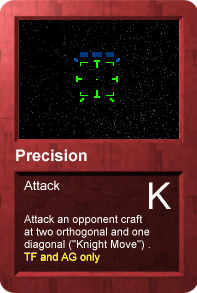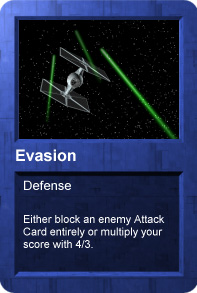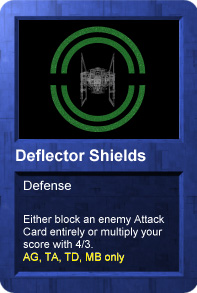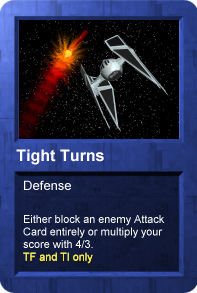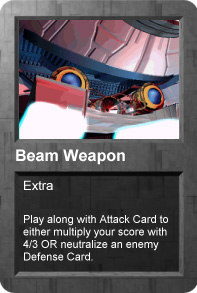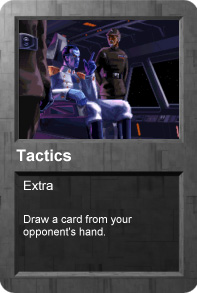There are two opposing parties with 8 fighters each. Depending on the number of participants, a fighter can be controlled by one pilot, a group of pilots, or a whole squadron. The procedure of the team assignment of the players is dependent on the situation, see first paragraph. I'd recommend a playoff battle for most cases. Depending on the score in that, the players are distributed that way that both teams are approximately at equal quality. Alternatively, for example in an inter-Wing-comp, each wing could determine its 8 best players in a playoff, and then these two teams could play this game. There are more possibilities, the important thing is you have 2 teams not too different in numbers. Then, each team selects a team commander. If that person is part of the "fighting team" or somebody from outside doesn't really matter. That commander will be playing the strategic part, that means, the board & cards game, but of course, his/her comrades can advise, as the game standings will be mailed to all team members by the Game Master. One team has won as soon as SIX fighters of the opposing team were destroyed. The battlefield is a 8x8 grid, just like a chessboard. Move = The maximum of spaces the unit can move in one turn. Range = The firing range of the unit. Opt.Range = The distance at which the unit must attack to have Handicap 1 (see "Fighting") for more info on Handicaps).
Remark: The TIE Phantom is invisible and is a kind of Joker in the game. It only becomes visible if attacking or attacked. A T/P can attack the "ordinary" way, with Attack Cards, or by moving it onto a field already occupied by an opponent craft (this is forbidden for all other craft). Therefore, the Optimal Range of the T/P is 0. If the opponent moves one of his craft onto a field occupied by a T/P, it immediately comes to fighting. It is still forbidden to move one of your own craft onto a field occupied by your own T/P, or vice versa. The 8 fighters start on the first/last row of the chess board, from left to right: TF, TI, TB, AG, TA, TD, MB, TP.  The team leader of each team assigns players to the crafts. He can do this public or secret, just as he likes. Players take turns. Each turn has 3 phases: Vector Phase Move Phase Fire Phase Vector Phase The game master gives you three new cards. Max hand Max hand size = 5 cards. If you have more, tell the gamemaster which cards to drop. Move Phase Play (discard) a Move Card to move one of your fighters. (This happens by mailing the gamemaster which card you want to use and which fighter(s) to move from where to where). Fighters cannot move through other visible units except for Knight type moves. The Move Card has a number. This is the number of spaces the fighter moves. The fighter table lists what type of Move Cards each unit can use. Moves are diagonal or orthogonal. Instead of moving just one unit in any direction, you can distribute the moving points on several fighters. You have to use up all moving points from the card. After the move phase, wait for the gamemaster's OK to go on. This ensures
Play (discard) an Attack Card to have a unit attack. (This happens by mailing the gamemaster which card you want to use and which enemy fighter you want to attack with which of your fighters). The Attack Card has a number. This is the Range of the attack. Attacks are diagonal or orthogonal. Instead of letting just one unit attack in any direction, you can distribute the attack points on several fighters. You don't have to use all attack points. Units cannot attack through other visible units except for Knight type attacks. Units cannot attack through their (invisible) T/P of their own side. If a unit (by chance) attacks through the (invisible) enemy T/P, the T/P will be attacked, not the intended target. The distance for the weighting calculation is the distance between the attacking unit and the T/P. Your opponent can play a Defense Card to either block your attack entirely or to boost his Handicap by multiplying with 4/3. The two players share one deck of 68 cards.
When two fighters engage in a dogfight, the attacking side chooses any TIE-Free mission (Can also be a XvT-Free or XWA-Free, but both sides have to agree with it in that case). The number of that mission is mailed to the gamemaster, who informs the two fighting players (if the player-to-craft assignments were made secretly, the attacker doesn't know the opponent, but the GM does). Deadline shouldn't extend two or three days, or the game will take very long. Submissions go to the GM, who will evaluate and weight them. This happens following this formula: SCORE := HAK * Handicap Handicap := 1 - |opt.Range - distance| / 8. Example: A Missile Boat (long range expert) attacks a TIE Fighter (short range expert) at a distance of 3. This would mean the following handicaps: MB: 1-|4-3|/8 = 1-1/8 = 7/8. TF: 1-|1-3|/8 = 1-2/8 = 6/8 = 3/4. So the MB would have an advantage here. Note that this doesn't mean that the MB is generally better than the TF. Just like in reality, at distances 1 and 2 (that means, short-range), the TF would have an advantage. Your attacks therefore require strategical planning. Remark: The best "normal" Handicap is 1. It doesn't affect your LL score at all. An even better Handicap can be achieved, though, by playing Defense Cards or the Tractor Beam Card, these allow Handicaps of 4/3. The worst Handicap possible is 1/2. It happens if a long-range-expert like MB or TB is attacked by a TIE Phantom at range 0. You must be an absolute pro to come out of that alive. |
